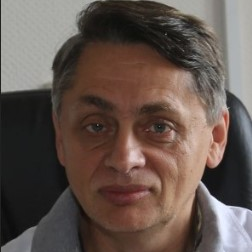Pharmaceutical and Cellular Strategies to Treat GVHD
A special issue of Pharmaceuticals (ISSN 1424-8247). This special issue belongs to the section "Pharmacology".
Deadline for manuscript submissions: closed (20 December 2021) | Viewed by 8338
Special Issue Editors
Interests: cancer immunology; stem cell biology; cancer biology; immunotherapy, bioimplants; sepsis immunopathogenesis
Interests: tumor microenvironment; tumor immunology; innate immunity; stress and inflammation
Interests: pediatric oncology-hematology; high-dose chemotherapу; Graft-versus-host disease; transplantation of hematopoietic cells
Special Issue Information
Dear Colleagues,
Graft-versus-host disease (GVHD) is a systemic disorder characterized by inflammation in different organs, with the specificity of epithelial cell apoptosis and crypt drop out.
Currently, intravenously administered glucocorticoids, such as prednisone, are the standard of care in acute GVHD and chronic GVHD. Other substances that have been studied for GvHD treatment include, for example: sirolimus, pentostatin, etanercept, and alemtuzumab. In August 2017 the US FDA approved ibrutinib to treat chronic GVHD after failure of other systemic treatments.
The Special Issue Pharmaceutical and Cellular Strategies to Treat GVHD will present reviews and original papers describing novel drugs and therapeutics up-to-date that hold promise for improved prevention and treatment of GVHD. The suggested papers will discuss different approaches to improve pharmaceutical strategies for prevention and treatment of GVHD (comparing methods of GVHD prevention and lymphodepletion); outline new therapeutic approaches involving innovative agents and hematopoietic stem-cell transplantation (HSCT) for pathogenetic GVHD therapy; compare the effectiveness of chemotherapy and HSCT, including promising technologies that may improve the results of treatment of patients with hematologic malignancies. Keywords: GVHD, Autoimmune Diseases, MSC, HSCT, Oncohematology, Prevention, Treatment, Chemotherapy
Prof. Mikhail Kiselevsky
Dr. Lina Hsiu Kim Lim
Prof. Svetlana Varfolomeeva
Dr. Kirill Kirgizov
Guest Editors
Manuscript Submission Information
Manuscripts should be submitted online at www.mdpi.com by registering and logging in to this website. Once you are registered, click here to go to the submission form. Manuscripts can be submitted until the deadline. All submissions that pass pre-check are peer-reviewed. Accepted papers will be published continuously in the journal (as soon as accepted) and will be listed together on the special issue website. Research articles, review articles as well as short communications are invited. For planned papers, a title and short abstract (about 100 words) can be sent to the Editorial Office for announcement on this website.
Submitted manuscripts should not have been published previously, nor be under consideration for publication elsewhere (except conference proceedings papers). All manuscripts are thoroughly refereed through a single-blind peer-review process. A guide for authors and other relevant information for submission of manuscripts is available on the Instructions for Authors page. Pharmaceuticals is an international peer-reviewed open access monthly journal published by MDPI.
Please visit the Instructions for Authors page before submitting a manuscript. The Article Processing Charge (APC) for publication in this open access journal is 2900 CHF (Swiss Francs). Submitted papers should be well formatted and use good English. Authors may use MDPI's English editing service prior to publication or during author revisions.
Keywords
- GVHD
- Autoimmune Diseases
- MSC
- HSCT
- Oncohematology
- Prevention
- Treatment
- Chemotherapy








